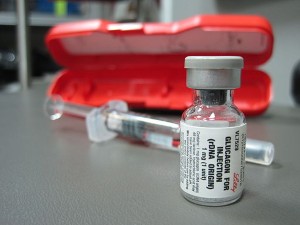30th December 2010
In the children’s ward at Winchester hospital there’s a room where parents can go if you need a little time out, without children. Equipped with kettles, fridges and toasters, a sofa and some chairs it offers a place to go and calm, or to scream if that’s what you need.
Jane and I went in there to have a cup of tea – tea of course cures all problems momentarily – and to chat about what had happened during the last 24 hours and specifically because the recent Glucagon training session had scared us somewhat. We’d also been told a little about Diabetic ketoacidosis (DKA) and it was all becoming a little too much.
After a few minutes another couple came in to and heard us talking about diabetes. They asked us about what had happened and how we were.
Then they told us a couple of things which, for me at least, helped an awful lot.
Their daughter had type 1 diabetes and was diagnosed many years before. They praised the staff at Winchester and said how good it was that they could if necessary go direct to the diabetes team for anything that was even remotely connected to diabetes. This meant no worry about getting the GP at the local surgery who knew diabetes inside out, or having to explain our situation again and again. This helped a lot.
Some thoughts crossed my mind: why were they here?; what was wrong with their daughter?; just how often do they find themselves back in hospital with her?
Somehow I managed to get the answer to all these questions without even asking as they sought to calm the worries they could clearly see written all over our faces.
“This is the first time our daughter has been back in hospital since being diagnosed, she’s just having a fever and we’ve found it difficult getting her blood glucose levels down. We called the hospital and they said ‘don’t worry, just bring her in and we’ll check her.’.”.
They probably never knew how much their words reassured us.






